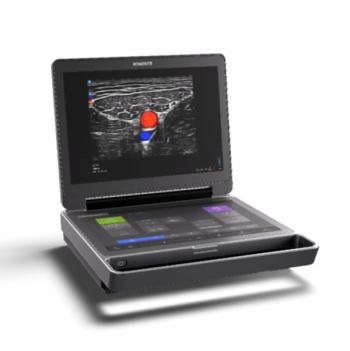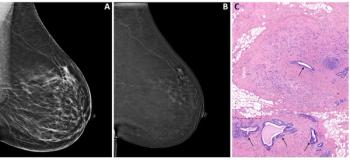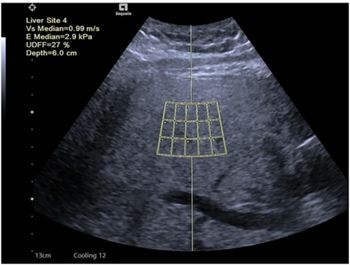
SMV moves into dedicated PET with work-in-progress Positrace
Device also includes integrated CT scannerSMV America made a move toward both the dedicated PET and hybrid technology markets this month with the introduction of Positrace, a work-in-progress PET/CT scanner, at the RSNA meeting. The firm believes
Device also includes integrated CT scanner
SMV America made a move toward both the dedicated PET and hybrid technology markets this month with the introduction of Positrace, a work-in-progress PET/CT scanner, at the RSNA meeting. The firm believes a hybrid unit such as Positrace is the best option for whole-body scans of oncology patients.
Positrace boasts a 70-cm aperture and includes the long axis/super long axis capabilities available on SMVs DST-XLi variable-angle gamma camera. The unit can detect tumors less than 1 cm, according to the company. Its PET scanner carries a 54-cm axial field-of-view, which allows for 78-cm coverage in two scans, and uses six sodium iodide detectors in a hexagonal ring.
SMV chose to invest its R&D in a dedicated PET scanner/hybrid because of the growing market in oncology imaging, according to Lonnie Mixon, vice president of clinical marketing for the Twinsburg, OH, firm. Eighty percent of PET scans performed are whole-body oncology scans, Mixon said, and since whole-body imaging is best for oncology, Positraces long axial coverage is well-suited for the application. Positraces CT scanner addresses clinicians need for anatomic localization with PET scans, and performs attenuation correction.
The CT scanner is supplied by imaging subsystem supplier Analogic of Peabody, MA, and offers a resolution of 6 line pairs/cm and air-cooled, slip-ring capable x-ray tubes. Rotation speed is two to four seconds per rotation, with slice thickness varying from 2 to 10 mm.
SMVs PowerStation workstation performs 3-D image acquisition and processing for Positrace. The firms complete suite of Vision clinical protocols, including Fourier rebinning, OSEM iterative reconstruction, and 3-D rendering, will be available for use with the system.
SMV isnt the only vendor exploring the PET/CT hybrid realm. GE Medical Systems introduced its Functional Anatomic Mapping device, a gamma camera with a CT scanner, at this years Society of Nuclear Medicine meeting in Los Angeles (SCAN 7/7/99), and highlighted the unit at the RSNA show. Siemens Medical Systems is also working on a PET/CT unit that it has installed at the University of Pittsburgh Medical Center.
SMV believes that two factors are key to the success of a hybrid system: the diagnostic quality of its CT scanner, and its list price.
We built in a diagnostic CT scanner after clinicians told us that incorporating a low-end CT just to lower the units price doesnt really work, Mixon said. So we stepped up the diagnostic level (of the CT) but expect the price to remain reasonably low: under $900,000.
SMV estimates that the recommended room dimensions required for Positrace will be about 15 x 17 feet, similar to the siting requirements of a conventional gamma camera or CT scanner.
SMV plans to install Positrace at its first two clinical beta sites in France next spring, one at a facility in Rennes, and one in Nantes. The company is in the process of submitting a 510(k) application to the Food and Drug Administration, and expects to receive clearance by next years Society of Nuclear Medicine meeting. SMV will begin shipping Positrace in the U.S. by the fourth quarter of 2000.
Newsletter
Stay at the forefront of radiology with the Diagnostic Imaging newsletter, delivering the latest news, clinical insights, and imaging advancements for today’s radiologists.






























